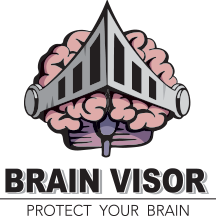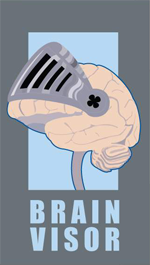
Aphasia
Jim Wampler, PsyD, EdS
Aphasia is a disturbance of language usage or comprehension that potentially impairs the power to speak, write, read, gesture, or to comprehend spoken, written, or gestured language (Zillmer, Spiers, & Culbertson, 2008). In general, aphasia is a disturbance connecting speaking to thinking which results in difficulties using words and sentences (expressive), understanding others (receptive) or, both the use and understanding of words (global).
Aphasia is differentiated from purely mechanical disorders of speech that are caused by paralysis or incoordination of the musculature of the mouth or vocal apparatus (such as dysarthria or speech apraxia) and does not include disturbances of language caused by severe intellectual impairment or loss of sensory input (such as mutism). Aphasia is also differentiated from malapropisms, neologisms, and tip of the tongue conditions. Other disorders commonly mistaken for aphasia include: auditory disorders, defects in arousal and attention, psychiatric disorders such as schizophrenia and conversion disorder, and an uncooperative patient.
While aphasia often occurs as a consequence of a vascular disorder such as stroke, tumor, or brain trauma, it may also stem from a lesion associated with seizures or a condition such as multiple sclerosis. Generally, aphasia typically results from cortical damage to the frontal and temporal areas of the left hemisphere. However, damage to subcortical structures of the basal ganglia and thalamus can also produce subcortical aphasia. Historically, aphasia is linked to Broca’s area of the brain, which is commonly known to mediate expressive language, and Wernicke’s area, which mediates receptive language. White matter arcuate fasciuculs tracts which connect Broca’s and Wernicke’s areas have also been shown to be associated with aphasia.
Paul Broca and Carl Wernicke first described aphasiac syndromes over 150 years ago (Caplan, 2012). Broca, a French neurosurgeon, examined the brain of a recently deceased patient who had been able to understand spoken language and did not have any motor impairments of the mouth or tongue. This patient could neither speak a complete sentence nor express his thoughts in writing. The only articulate sound he could make was the syllable “tan”. In a post mortem examination, Broca found a sizable lesion in the left inferior frontal cortex, suggesting the existence of a language center.
Several years later, Carl Wernicke, a German neurologist, discovered another part of the brain which was involved in understanding language—the posterior portion of the left temporal lobe. His patient, who had a lesion at this location, could speak, but his speech was often incoherent and made no sense. Together, Broca and Wernicke provided some of the earliest evidence that there are separate areas of the brain for speech production and for speech comprehension. Their work, which suggested that anatomical structure constrains function, has become commonly known as the modular or localization approach. Following World War I, some experts begin to abandon modular theory for a more holistic approach (Heilman & Valenstein, 2012). Although there persists to be an undercurrent of divergence in how brain function should be described, it is generally understood that brain functions tend to be localized and require the participation of a number of divergent brain areas. Conflicting understanding of brain function, however, has somewhat muddied the categorization of aphasia types.
Though some disagreement among experts persists concerning the number and types of aphasias, traditionally, aphasias have been broadly defined by at least two categories: expressive (non-fluent) and receptive (fluent). Pure aphasias are often listed as a third category, and primary progressive aphasia, which is associated with progressive illnesses or dementia, may be considered as a separate category.
Fluent or receptive aphasias are symptomatically related to the input or reception of language. They are characterized by fluent spontaneous speech with normal articulation and rhythm, but display difficulties either in auditory verbal comprehension or in repetition of words, phrases, or sentences spoken by others. Fluent aphasias include: Wernicke’s, Transcortical Sensory, Conduction, and Anomic aphasias.
Nonfuent or expressive aphasias are symptomatically related to the production difficulties of speech. It is important to note, however, that nonfluent aphasias are not deficits in making sounds, but rather of switching from one sound to another. While there is typically relatively good auditory verbal comprehension, there is difficulty in the flow of articulation, so that speech is broken or halting. A person with a nonfluent aphasia generally speaks in short phrases interspersed with pauses, makes sound errors and repetitious errors in grammar, and frequently omits function words. Nonfluent aphasias include: Broca’s, Transcortical Motor, and Global aphasias.
In pure aphasias there are selective impairments in reading, writing, or the recognition of words. These orders can be quite selective in that a person may be able to read, but not write, or able to write, but not read. The pure aphasias include: alexia without agraphia, agraphia, and word deafness.
Traditional neurological models of language and aphasia are founded on the work of Ludwig Lichtheim (1845-1928), a German physician (Caplan, 2012). He recognized seven aphasic syndromes affecting spoken language and its processing. While functional imaging processes have extended our understanding of neural processes, Lichtheim’s model is still considered the clinical standard for aphasiac syndromes. The following information provides a current description of the various aphasiac syndromes commonly recognized today.
Fluent or Receptive Aphasias
Wernicke’s (Sensory) Aphasia is characterized by a major disturbance in auditory comprehension. Symptoms include the ability to produce fluent speech with a normal rate, but the speech is difficult to understand. Individuals with Wernicke’s aphasia may speak in long sentences that have no meaning and add unnecessary or made-up words. Patients typically demonstrate disturbed sounds and structures of words (phonemic, morphological, and semantic paraphasias) and poor repetition, naming, and comprehension. These individuals are often unaware of their language mistakes. Classical lesion location is the posterior half of the first temporal gyrus (Wernicke’s area).
Transcortical Sensory Aphasia is characterized by disturbance of single word comprehension with relatively intact repetition. Individuals with Transcortical Sensory Aphasia have deficits in accessing (thinking about or remembering) the meaning of words, problems with word finding and recall of words (anomia). Language errors include production of unintended syllables, words, or phrases during the effort to speak (verbal paraphasias). Comprehension is impaired and these individuals cannot read or write. Classical lesion location is white matter tracts connecting the parietal lobe to the temporal lobe, or areas surrounding Wernicke’s area.
Conduction Aphasia is characterized by disturbance of repetition and spontaneous speech (phonemic paraphasias). Patients can comprehend and produce speech, but cannot connect comprehension to production. Speech is fluent and meaningful, without articulatory disorders, but sometimes halting. Language errors include phonemic paraphasias and neologisms, and phonemic grouping errors. Individuals with conduction aphasia have difficulty answering questions and have no ability to repeat words. Classical lesion location is in the arcuate fasciculus connections between Broca’s and Wernicke’s areas.
Nonfluent or Expressive Aphasias:
Broca’s Aphasia is characterized by a major disturbance in speech production with sparse, halting speech, often misarticulated, and frequently missing function words and bound morphemes. Speech is often slow and laborious with recurring utterances or syndrome of phonetic disintegration. Broca’s Aphasia patients often eliminate adjective, articles, and adverbs. Classical lesion location is the posterior aspects of the 3rd frontal convolution (Broca’s area).
Transcortical Motor Aphasia is characterized by disturbance of spontaneous speech similar to Broca’s aphasia with relatively preserved repetition and comprehension. The lack of creative speech is the main feature. Transcortical motor aphasia patients can usually only utter a few syllables. Language errors include uncompleted sentences and anomias. Naming is generally better than spontaneous speech and writing is usually impaired. Classical lesion location is white matter tracts connecting the parietal lobe to temporal lobe or portions of the inferior parietal lobe.
Global Aphasia is characterized by major disturbance in all language functions. Patients exhibit laborious articulation, poor comprehension, poor production, and poor repetition. Global aphasia is the most severe form of aphasia. Classical lesion location includes multiple sites of damage in the perisylvian association cortex.
Mixed Transcortical is a combination of the two transcortical aphasias where both reception and expression are severely impaired but repetition remains intact. Patients have no language function and cannot spontaneously understand or produce speech. Classical lesion location includes damage to areas surrounding both Broca’s and Wernicke’s area.
Assessment and Treatment of Aphasia
Aphasia assessment often includes evaluation of auditory and visual comprehension, oral and written expression, and conversational speech. Because traditional test batteries tend to be lengthy and require special training to administer, some brief aphasia screening tests have been developed (Kolb & Whishaw, 2009). These screening devices, however, while providing an efficient means of language disorder discovery, cannot provide detailed description of the linguistic deficit.
Aphasia treatment generally requires speech-language therapy which is specialized based on the type of aphasia. Recovery from aphasia largely depends on the severity of the injury and the goals of the patient.
References
Caplan, D. (2012). Aphasic syndromes. In K.M. Heilman & E. Valenstein (Eds.) Clinical Neuropsychology (pp. 22-41). New York: Oxford University Press.
Heilman, K.M. & Valenstein, E. (2012). In K.M. Heilman & E. Valenstein (Eds.) Clinical Neuropsychology (pp. 3-21). New York: Oxford University Press.
Kolb, B. & Whishaw. (2009). Fundamentals of Human Neuropsychology. New York: Worth Publishers.
Zillmer, E.A., Spiers, M.V., & Culbertson, W.C. (2008). Principles of Neuropsychology. Belmont, CA:Wadsworth.
 |
BrainVisor – Protect Your BrainBrainVisor does not provide medical or psychological advice, diagnosis or treatment recommendations. The material on this site is for informational purposes only and is not a substitute for your doctor or other health care professional's care.
|
 |
||
|









